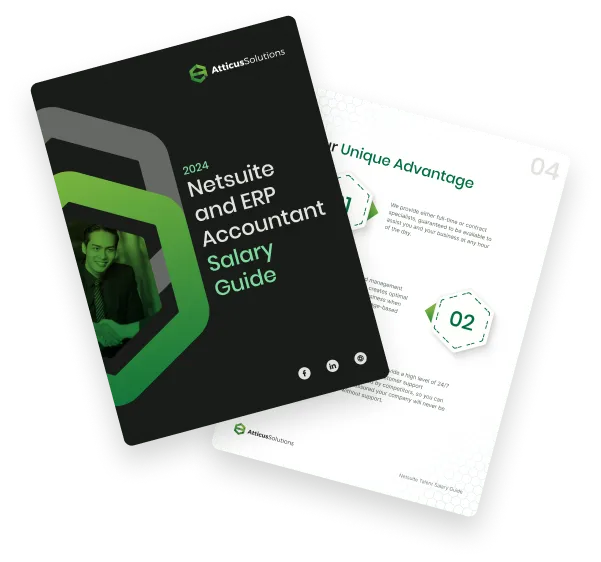Using Technology to Enhance Mentorship Programs

Imagine connecting with a mentor halfway across the globe, effortlessly sharing insights and guidance, all thanks to the power of technology.
As remote work becomes more prevalent, integrating technology into mentorship programs has opened up exciting new possibilities.
How has technology reshaped the mentorship landscape? What makes these innovations so impactful?
Beyond just bridging geographical gaps, it has transformed the way mentors and mentees interact and collaborate. From automating the matching process to streamlining administrative tasks, technology is redefining the mentorship experience.
Video conferencing, instant messaging, and email have become vital tools, enabling seamless communication and efficient information sharing. These advancements not only enhance connectivity but also enrich the overall mentorship journey, making it more dynamic and accessible.
Explore how the digital age is revolutionizing mentorship, offering unprecedented opportunities for growth and connection.
Discover ways technology can amplify the effectiveness of mentorship programs, ensuring they remain relevant and impactful in our increasingly virtual world.
The Role of Technology in Mentorship
Mentorship programs have been around for decades, and they have been effective in helping individuals develop their skills, knowledge, and careers.
However, technological advancements have taken mentorship to a whole new level. Technology has made mentorship more accessible, efficient, and effective.
Digital Platforms and Tools
Digital platforms and tools have revolutionized the way mentorship programs are conducted.
These platforms and tools offer a range of features that enhance communication and interaction between mentors and mentees. They provide a user-friendly interface that makes it easy for mentors and mentees to connect, share resources, and collaborate.
One example of a digital platform that has been widely used for mentorship is LinkedIn. LinkedIn allows mentors and mentees to connect and share their experiences, knowledge, and skills.
Other digital tools, such as video conferencing software and online collaboration apps, have also made it easier for mentors and mentees to communicate and work together, regardless of location.
AI-Driven Innovations
Artificial Intelligence (AI) has also played a significant role in enhancing mentorship programs.
AI-driven innovations such as chatbots and virtual assistants have made it easier for mentors and mentees to access information and resources.
These tools can provide personalized guidance and support, making mentorship more efficient and effective.
Virtual Communication and Meetings
The rise of remote work has made virtual communication and meetings essential to mentorship programs.
Virtual communication tools such as video conferencing software have made it possible for mentors and mentees to connect and communicate in real time, regardless of their location.
This advancement has made mentorship more accessible and convenient for individuals unable to meet in person.
Enhancing the Mentorship Experience
Mentorship is a powerful method for fostering personal and professional development. With technological advancements, mentorship programs can be more impactful and far-reaching.
Here are three ways technology can improve the mentorship experience:
1. Personalized Learning and Development
Technology allows for a customized learning journey. Online platforms offer extensive resources tailored to individual goals and interests, such as articles, videos, and podcasts.
Mentors can leverage these tools to create specific learning plans that align with their mentees' career aspirations, enhancing their developmental experience.
2. Building Effective Mentor-Mentee Relationships
Effective relationships between mentors and mentees are crucial for successful mentorship.
Technology can facilitate these relationships through online communication tools that enable regular check-ins and feedback sessions.
These tools ensure that mentees receive timely guidance and that mentors can monitor and support their mentees' progress in real time.
3. Feedback and Continuous Improvement
Continuous feedback is essential for growth. Technology can aid in this through online surveys and feedback tools that track progress and highlight areas for improvement. This helps mentees gain valuable insights and constructive criticism, fostering both personal and professional growth.
Challenges and Best Practices in Tech-Enhanced Mentorship
Incorporating technology into mentorship programs has opened up new opportunities for connection and growth. However, this digital shift also presents unique challenges that need to be addressed.
By understanding these obstacles and implementing best practices, tech-enhanced mentorship can become a powerful tool for personal and professional development.
This section explores common hurdles and provides strategies to ensure a prosperous and inclusive mentorship experience.
Navigating Common Obstacles
1. Accessibility
While technology has expanded the reach and efficiency of mentorship, it also introduces unique challenges.
A significant issue is accessibility. Not all mentees and mentors may have the same technological resources, which can hinder effective communication.
To address this, utilize multiple communication channels such as email, phone calls, video conferencing, and instant messaging. This variety ensures everyone can participate effectively, regardless of their tech capabilities.
2. Accountability
Accountability is another challenge in tech-enhanced mentorship. Relying on digital interactions can make it easy to lose track of goals and progress.
To combat this, set clear objectives and expectations from the beginning. Regular check-ins are essential to keep everyone aligned and progressing.
Additionally, leveraging automation tools can help track milestones and send reminders, ensuring participants remain focused on their goals.
Adopting Mentorship Best Practices
To ensure the success of your tech-enhanced mentorship program, it is essential to adopt best practices.
1. Accessibility
One of the most important best practices is commitment. Both the mentor and mentee must be committed to the program and each other. This means setting aside time for regular check-ins, being responsive to communication, and following through on commitments.
2. Diversity, Equity, and Inclusion
Ensuring diversity, equity, and inclusion within the program is also essential.
Make the mentorship accessible to all participants, considering factors such as language, cultural backgrounds, and any specific accessibility needs.
Creating an inclusive environment ensures that all participants feel valued and supported, which enhances the program’s overall effectiveness.
3. Networking and Innovation
Encouraging networking and fostering innovation are also critical components.
Mentors and mentees should be encouraged to connect with others in their industry, attend relevant events, and stay updated on current trends and technologies.
This not only broadens their professional network but also keeps them informed and motivated to apply new knowledge and skills in their mentorship journey.
Measuring the Impact of Technology on Mentorship
As technology becomes increasingly integrated into mentorship programs, it becomes crucial to evaluate its influence.
Employing success metrics and feedback mechanisms becomes imperative in gauging the effectiveness of these initiatives.
Success Metrics and Feedback Loops
One advantage of technology in mentorship programs is the ability to track progress and measure success.
Mentors and mentees can provide ongoing feedback on their experiences through surveys and feedback forms. This feedback can be used to improve the matching process, refine the program’s goals, and identify areas for improvement.
Additionally, algorithms and AI-driven matching can help ensure that mentor-mentee pairings are impactful. By analyzing data on past pairings, the matching process can be continuously refined to improve the quality of mentorship relationships.
Long-Term Effects on Career and Personal Growth
The impact of technology on mentorship can be seen in the long-term effects on career and personal growth. By providing access to a broader professional network, technology can help mentees identify job opportunities and career paths they may not have considered otherwise.
Furthermore, technology can facilitate continuous learning and a deeper understanding of industry trends and best practices. This can lead to more informed decision-making and a stronger skillset.
Conclusion
Incorporating technology into mentorship programs dramatically enhances the experience for both the mentor and mentee. Video conferencing, instant messaging, and other communication tools can help mentors and mentees connect more easily and frequently, regardless of their physical location.
Additionally, online resources such as webinars, articles, and forums can provide valuable information and support to mentees.
It is important to note that technology should not replace the human element of mentorship.
Face-to-face interactions and personal connections are still crucial to building a solid mentor-mentee relationship. However, technology can supplement these interactions and help mentors and mentees stay connected in between meetings.
Overall, the integration of technology into mentorship programs can lead to more efficient and effective communication, increased access to resources, and ultimately, a more successful mentorship experience.
If you're interested in learning more about the NetSuite market and want expert insights, download Atticus Solutions' Salary Guide today.
It's a valuable resource for anyone looking to stay current in the industry.
Frequently Asked Questions

Compare NetSuite ERP talent salaries
Attracting top NetSuite talent with clear job descriptions is the first step. Understanding salaries is your next key move! Download this free salary guide to view talent costs, offshore hiring tips, and more
Learn how to scale your business

What is Your Strategy for Finding Rare Skill Sets like NetSuite Accountants?
Join our talented team. We are a small, passionate team with a commitment to hiring the best.





